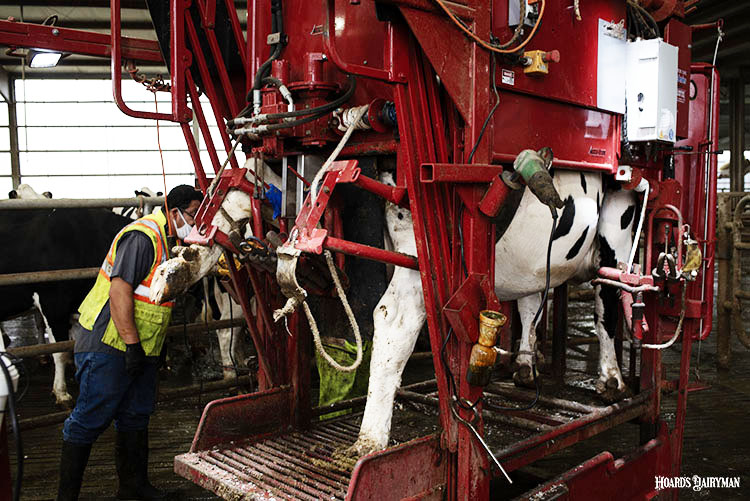
“If you take off any horn, it has to meet those two goals. If it doesn’t meet those goals, you should probably leave it on,” said Cramer during the annual conference of the American Association of Bovine Practitioners (AABP) held in Milwaukee, Wis. The associate professor at the University of Minnesota offered hoof trimming advice for dairy veterinarians.
Successful hoof trimming starts with selecting the right cows to trim, Cramer said. He pointed to four categories of cows that might enter the trimming chute:
The visibly lame cows. “These cows need to be treated,” he said.
- The recheck cows. These are cows that were treated before and need to be reassessed.
- The chronic cows. These are cows that are repeatedly dealing with lameness issues due to changes in the foot.
- The healthy cows. The ultimate question here, Cramer said, is when to trim these healthy animals.
He acknowledged that a common recommendation is to trim cows twice per lactation. There is a cost, though, for each trim, both for the actual trim — this could be $12 to $20 for a healthy cow, Cramer estimated — and unintended consequences such as changes in lying time and a decline in milk production.
“Trimming changes behavior, and not always for the better,” Cramer noted.
Determining the best trimming schedule is farm dependent, and Cramer said to base this decision on hoof wear and hoof health data if it is available. He advised that a trim prior to dry off is likely warranted for every dairy cow.
Cramer also emphasized the importance of using the proper equipment. This begins with the ability to restrain the cow in a way that is safe for the animal and the person doing the trimming.
“I absolutely want you to do something for a lame cow, but I want to think about safety for yourself,” he said to the bovine veterinarians in the audience. “You can help the cow more if you can do a better job, and if you have good restraint, you can do a good job trimming.”
He also commented about trimming tools. “Your hoof trimming knives should be sharp,” he advised. “If you have a sharp knife, you can do a good job and you are not going to cut yourself.”
Cramer noted that there are several trimming techniques performed on farms that can work well. He said he is less worried about the steps and how trimming is done and more concerned about the final product that helps keep cows walking on four healthy feet.








